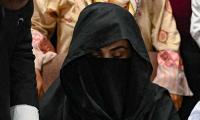Pakistan has become a modern-day Sisyphus, trying to resolve its terror problem only to have it rise again after a few years. The Tuesday (July 18) attack in Hayatabad, Peshawar where a Frontier Constabulary (FC) vehicle was targeted by a lesser-known terror group Tehreek-e-Jihad Pakistan (TJP) is yet another example of the horrific return of terror in the country. According to the Global Terrorism Index (GPI), an annual report released by the Australia-based Institute for Economics and Peace (IEP), Pakistan faced the second-largest interest in terrorism-related deaths in 2022 as the death toll rose to 643 – marking a 120 per cent increase as compared to the previous year. Pakistan understands the gravity of the situation. In the 258th Corps Commanders Conference on Monday (July 17), with the COAS in the chair, officials maintained that the rise in terrorism in the country is directly linked to safe havens provided to militants in a neighbouring country (Afghanistan).
In 2021, after the Afghan Taliban takeover in Kabul, political analysts had raised concerns over the possible resurgence of terror activities in Pakistan. At that time, leaders in the country, including the then prime minister, had celebrated the takeover. Many parliamentarians had already raised alarm bells that some TTP militants were active in the region (this was before the fall of Kabul), and yet their warnings were unheeded. Monday's Corps Commanders Conference shared that terrorists are equipped with the latest weapons. Security analysts had feared such an outcome back when the US and Nato forces were leaving Afghanistan. The hasty surrender meant that American troops left behind advanced and modern weapons for a large population that grew up on war and violence.
Just in this month alone, at least eight people, including four security personnel, have embraced martyrdom so far in attacks carried out in Balochistan and Khyber Pakhtunkhwa. Tuesday's attack left at least eight people injured. While the recent visits and meetings of Pakistan’s military leadership highlights that our security forces are prepared to fight back (the COAS recently took his maiden trip to Iran where he met his counterpart, with both sides agreeing that terrorism is a common threat and there is a need to work together to eradicate it through intelligence sharing), this multifaceted problem requires all stakeholders to come up with a coherent plan to ensure that the monster of terrorism is put to rest permanently. Pakistan’s previous policy of dialogue with the TTP was proven to be not only ineffective but also counter-productive. It is encouraging that the current military and civilian leadership is focused on uprooting terror. It is also important to find out if the TTP is using pseudonyms or whether other factions from within have actually emerged -- the TJP being a case in point. Pakistan is trapped in a vicious economic crisis which cannot be stabilized unless its security situation improves. For this, the country will have to apply a zero-tolerance approach towards terrorism.
Even on social media platforms, women journalists face indescribable abuse
KP govT unveils roadmap which highlights measures such as special security force, deweaponisation
Christians and other minority groups face discrimination when it comes to employment, housing, education and security
PTA’s rationale is to monitor VPN traffic to ‘address security concerns’, but in reality, this could lead to...
Deaths due to militant attacks have now soared well past 1000 mark
Dialogue between government and opposition is cornerstone of any functioning democracy







